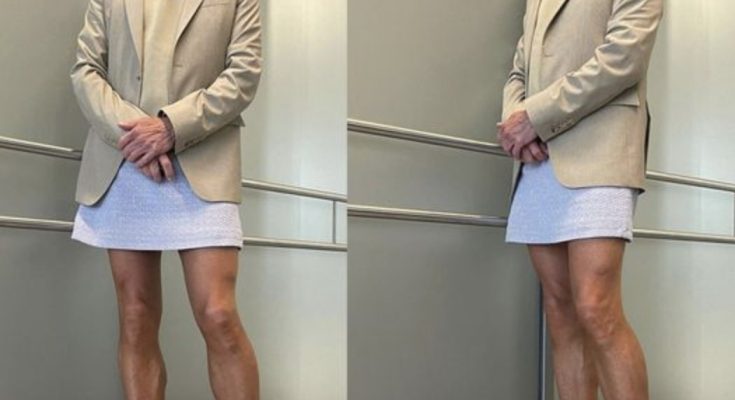
Mark Bryan is a 61-year-old engineer from Germany who isn’t afraid to challenge gender stereotypes.
Though high heels were first designed for men back in the 10th century—once a symbol of stature and flair—their modern narrative has shifted almost entirely toward femininity. But that narrative is being rewritten, step by deliberate step.
Mark Bryan stands among a growing collective of men boldly reclaiming heels, not as novelty, but as fashion—fluid and unconfined. A 61-year-old father of three, Mark juggles his dual worlds as a dedicated robotics engineer and a present, engaged parent.
At first glance, you might not peg him as an Internet sensation. With his neatly pressed shirts, structured blazers, and no-nonsense demeanor, he gives the impression of someone immersed in precision and practicality. Yet beneath that calm exterior is a man making digital waves.
A native of Germany, Mark has captivated the online world with his unapologetically expressive wardrobe—think pencil skirts, towering pumps, and poses filled with poise. His Instagram feed, a curated gallery of audacity and elegance, has swelled to nearly 660,000 followers, each drawn to his quiet defiance of fashion’s outdated binaries.
Mark Bryan doesn’t just walk in heels—he strides through expectation.
Mark’s signature style often features an eclectic mix—heels that click with confidence, boots that ground his stride, and skirts that flow with ease. His wardrobe defies old norms, and his voice matches that rebellion. He speaks candidly and without hesitation: his way of dressing is nothing unusual—it’s simply his truth.
As an engineer, Mark holds a firm conviction that garments carry no inherent gender. He gravitates toward skirts rather than dresses, preferring the versatility of pairing them with structured, often traditionally “masculine” tops—creating a harmonious blend of contrast and expression.
To him, skirts offer a broader creative canvas than the monotonous loop of slacks and khakis that fill the average man’s closet. They’re not just clothing—they’re choice, freedom, variation.
His children stand behind him with unwavering pride. Having been raised with open dialogue and clarity, they understand one core message their father instilled early on: what you wear does not define your gender, nor does it whisper anything about your sexuality. It’s fabric—stitched with personality, not labels.
His daughter, one of his most ardent admirers, eagerly awaits the day she can slip into a few of her father’s cherished wardrobe pieces—her eyes gleaming with anticipation and affection.
In tandem, his wife stands steadfast beside him, not just offering quiet encouragement but also lending her own sense of style as she helps him curate his ensembles. Her support is not passive—it’s active, intentional, and deeply rooted in love.
Of course, not every onlooker views his sartorial freedom with such warmth.
Mark has weathered a storm of unsolicited remarks—both from digital naysayers and face-to-face critics. Often, he finds himself gently but firmly pushing back, pointing out that the barrage of questions and comments would vanish if he were clad in something more conventional—say, standard-issue trousers. But because he chooses a path less orthodox, the scrutiny follows.
Still, his resilience, buoyed by the unwavering support of those closest to him, turns judgment into background noise.
Do you think you would be able to be in Mark’s shoes?



